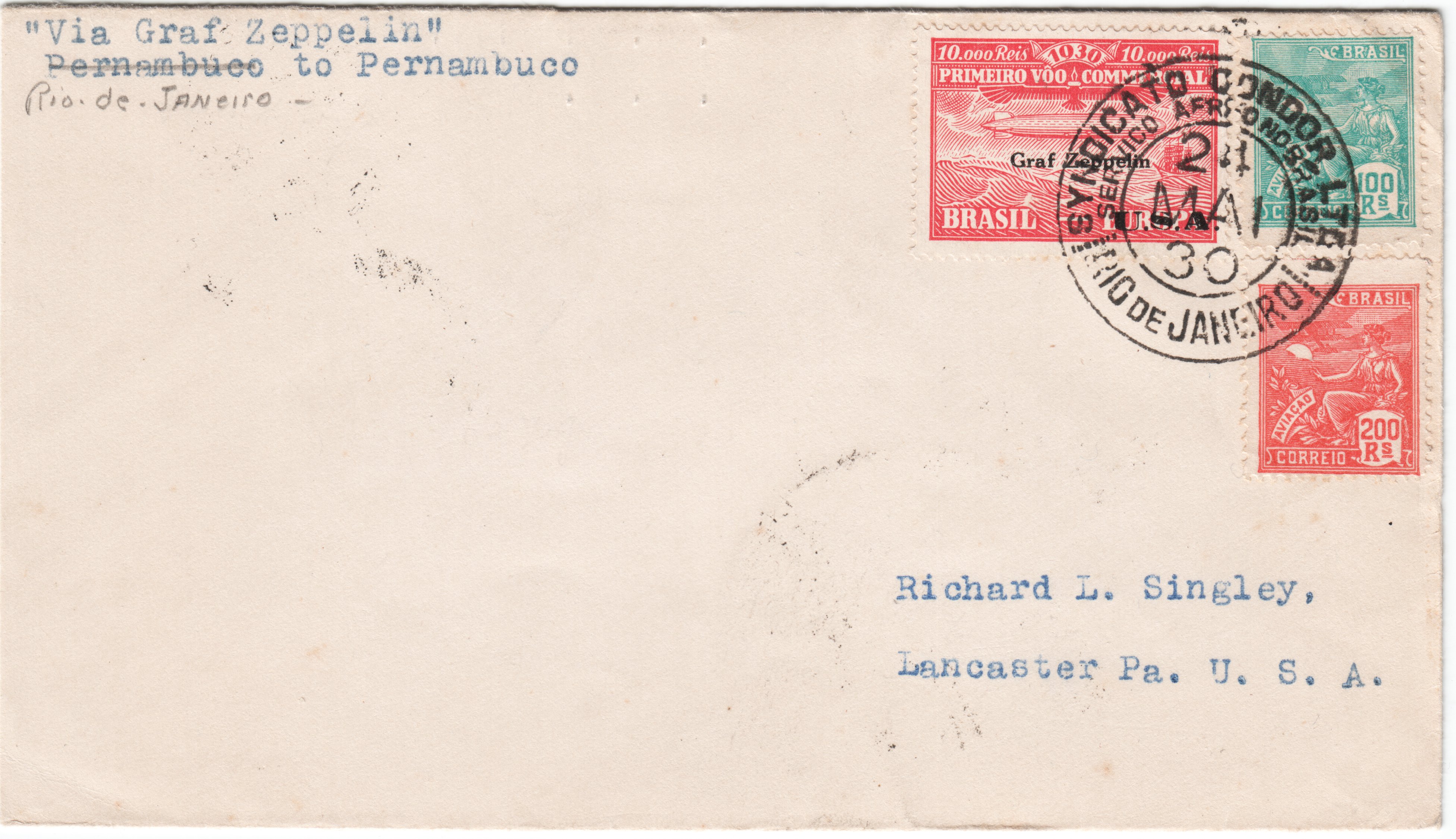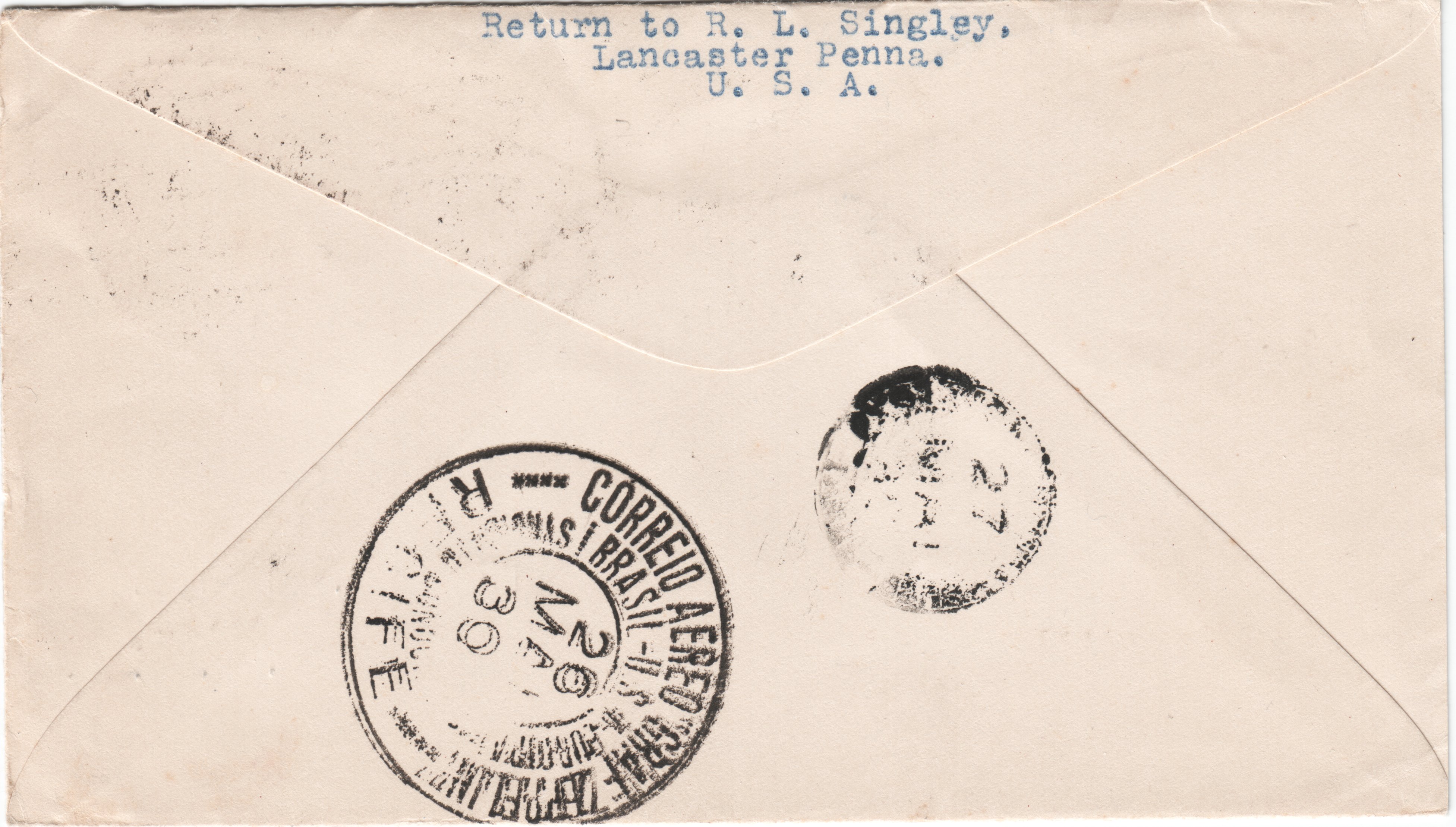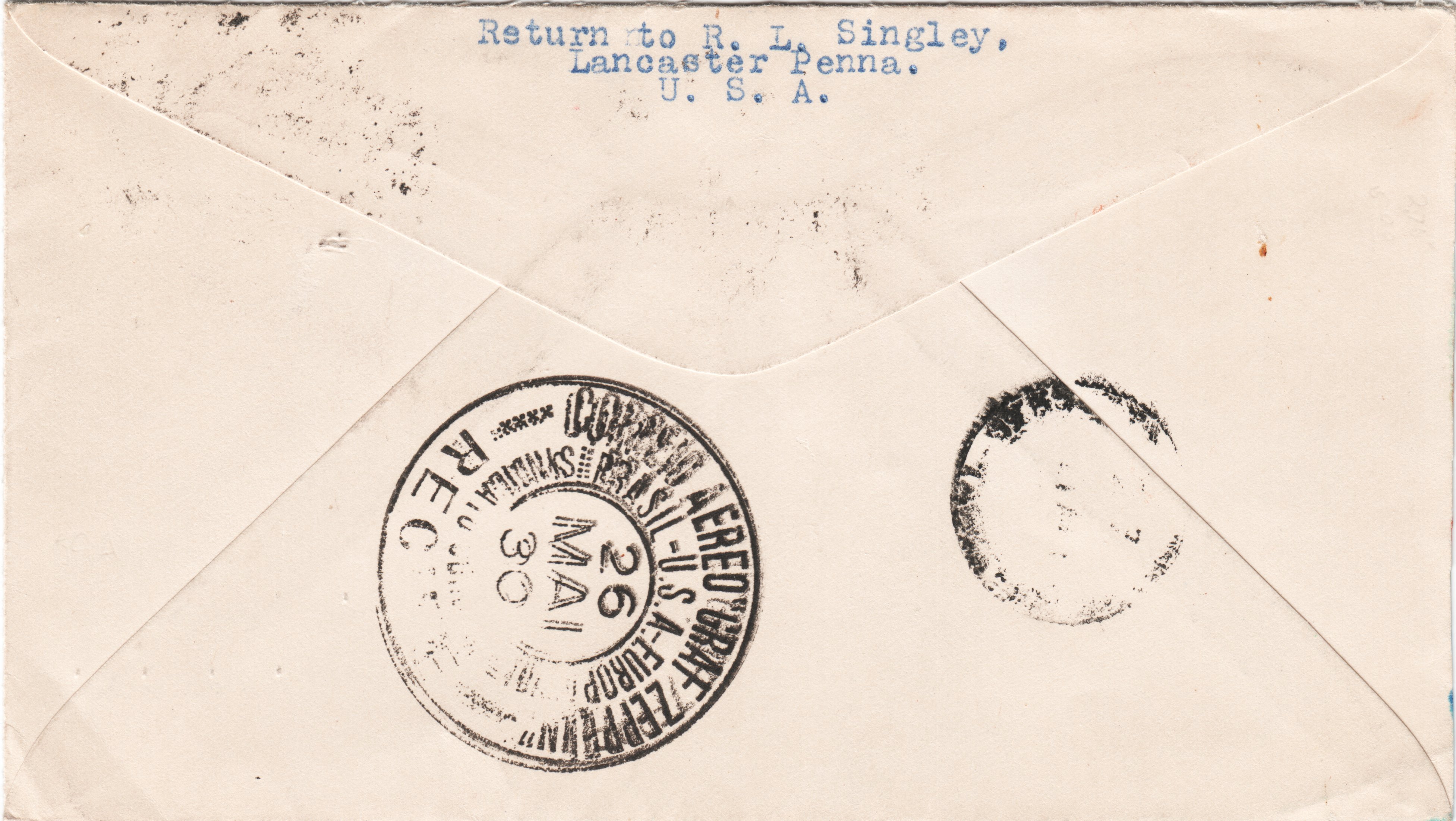



|
© Dr. Artur Knoth |
Brazilian Philately: The Pan Am Zeppelin Flight of 1930 |
The Richard L. Singley Covers
A recent article in Linn's (John M. Hotchner: Wrong Color Cancel Caused Chaos on Zep Cover; Linn's Stamp News 84(4290), 4, January 17, 2011), demonstrated how a with a cancel in the wrong color, a cover could run afoul of the postal regulations of the time. Since the cover was a Richard L. Singley cover (a famous aerophilatelist of his time; in 1945 he won the prestigious AAMS Walter J. Conrath award), this was the impetus to examine the four covers in my collection, leading to an interesting discovery that might in no manner be unique.
Two of the covers are ho-hum except that the second had a since scene watercolored on it after the fact. Also both had, initially them going nowhere, since the routing was Pernambuco-Pernambuco. Both are below.
The next cover demonstrates how Lancaster Penn. Sometimes even used a duplex cancel for back-stamping a cover. Besides the Seville (5.6.30) the cover has the NY13 green Zep (16.6.30) and the Lancaster duplex (18.6.30).
But the fourth cover is the really interesting one. It is a prime example of where the cover, send from Brazil to the US, was received by the sender in time to refrank it with US postage and send it on the US-Seville leg. More covers of this type could exist, with different combinations, i. e. Spanish-US postage etc. Instead of a mixed franking cover, the original was a 59E and then became an example of a 64K (see Sieger).
The reverse of the cover tells the whole story. In the lower left hand corner the May 31st,1930 Lakehurst green Zep and a violet hand cancel from Lancaster for June 1st, 1930. Then there's the Seville June 5th,1930 followed by the NY13 green Zep of June 16th,1930 and finally the Lancaster black duplex of June17th,1930. Furthermore, on the front, the rhombus cachet used was the type for the last leg, US to Europe. The Brazilian part of the cover wouldn't have and didn't receive the a rhombus, for that leg the big Recife cancel was the cachet.
While this last cover may not be all that rare, it is not a common case and further of these, in other combinations may exist. After all Lakehurst and Lancaster (eastern lower edge of Penn.) are only about 75 miles apart.